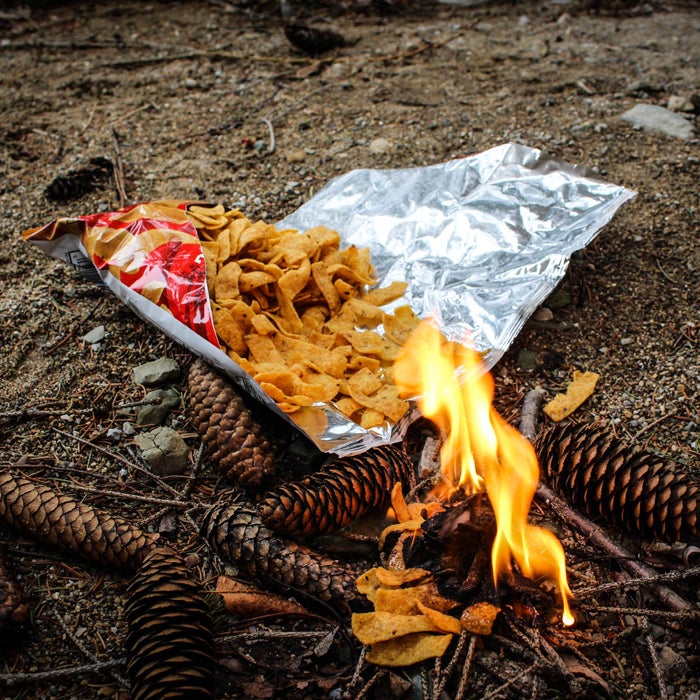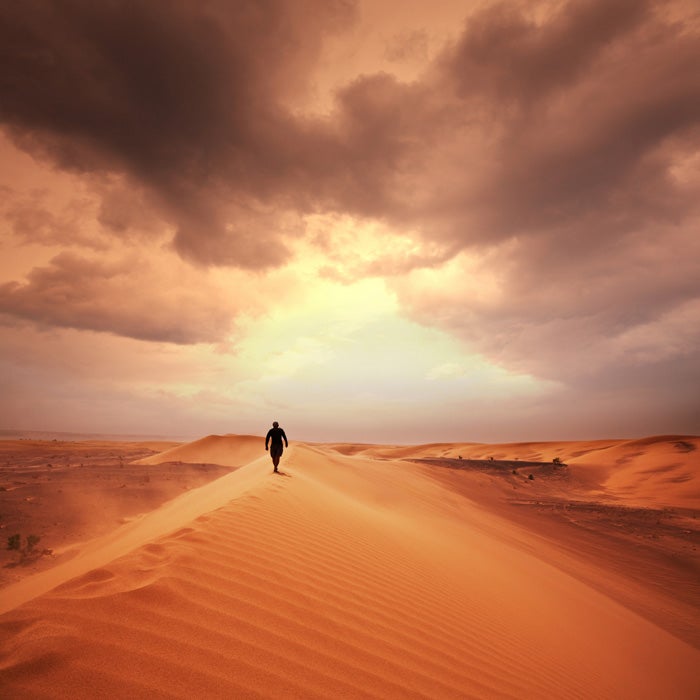There’s a group of people who believe that in a world of extreme natural disasters (think Superstorm Sandy or the ), being ready for any catastrophe—natural, manmade, or otherwise—is more than just a precaution. It’s practical.
One such person is Creek Stewart, owner of the and author of the book Stewart preaches the gospel of disaster preparedness, teaching individuals and groups how to survive—and thrive—no matter the circumstances.
Sometimes that means adapting regular household items, even trash, when more specialized tools aren’t on hand. “Innovation may very well be the most important survival skill,” says Stewart. So whether you think the world is coming to an end or just want to prepare for an accident in the backcountry, you’ll need the following everyday objects in your bug-out bag if (or should we say when?) disaster strikes.
Bra Cup Debris Mask
Survivors can face serious respiratory problems as the result of breathing in toxic ash, pulverized concrete, particles, and dust. “Believe it or not, the cup of a bra can make an impressive debris mask in a pinch,” Stewart says. Most are sized perfectly to cover the nose and mouth, and the straps can be reworked to tie around the head for hands-free use.

Chewing Gum Fire Starter
In the middle of a catastrophe, that pack of Juicy Fruit serves a far greater purpose than just staving off hunger or freshening your breath. Use the foil-backed wrapper to short circuit an AA battery and create a flame. First, tear the wrapper into an hourglass shape and touch the foil to the positive and negative battery terminals. The electrical current will briefly cause the paper wrapper to ignite. Use the flame to light a candle or tinder.
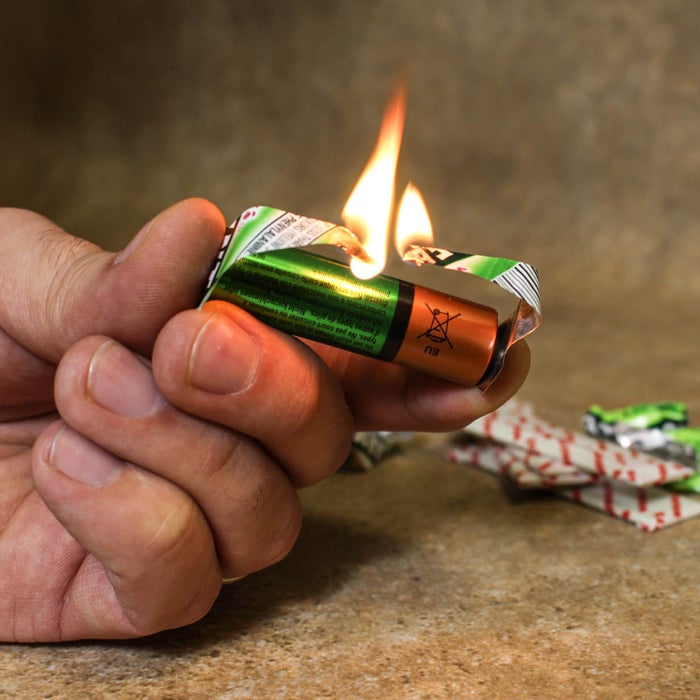
Tuna Can Emergency Light
In case of a mass power outage, you’ll need to illuminate your surroundings. If the flashlight batteries are dead, a can of tuna can provide hours of light. Stab a small hole in the top of an oil-packed tuna can, then roll a two-by-five inch piece of newspaper into a wick. Shove the wick into the hole, leaving a half-inch exposed. Wait a moment for the oil to soak to the top of the wick, then light with matches. “Your new oil lamp will burn for almost two hours,” Stewart says, “and the tuna will still be good to eat afterward.”
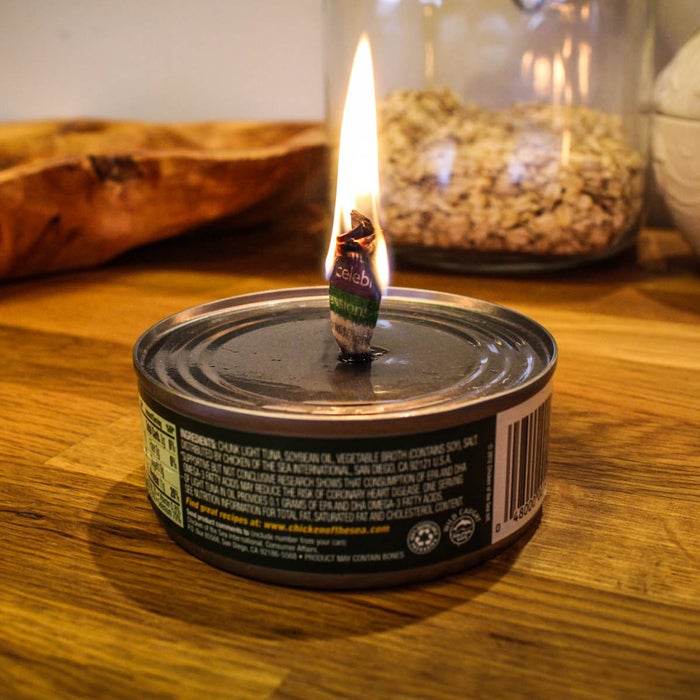
Tampon Tinder
In inclement weather, starting a fire Boy-Scout-style can be a bit tricky. Thankfully, Stewart says tampons are among the best tinder on the planet. Begin by removing the cotton plug from its waterproof wrapper and plastic applicator. Then pull apart the tampon to expose the highly-flammable individual fibers—these will burst into flame with just a spark from a ferro rod or cigarette lighter.
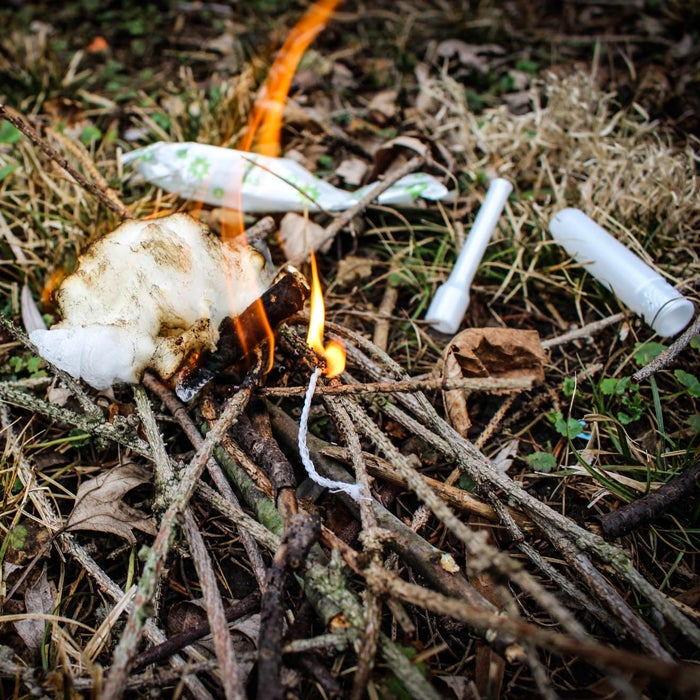
Lip Balm Candle
When Chicago was hit with a serious blizzard in 2011, dozens of drivers were snowed into their vehicles on Lake Shore Drive. Those who ran out of gas because they left their engines running to maintain heat risked hypothermia. “It may surprise you to learn that a candle can actually provide enough heat to raise the temperature of a small space a few life-saving degrees,” Stewart says. Take the cotton string from a tampon and, using a paperclip, stick it into a tube of lip-balm. Light the end, and you’ll get an instant candle that can burn for about two hours. Keep the plastic tube from catching fire by slowly twisting out the lip balm as the wick burns down.
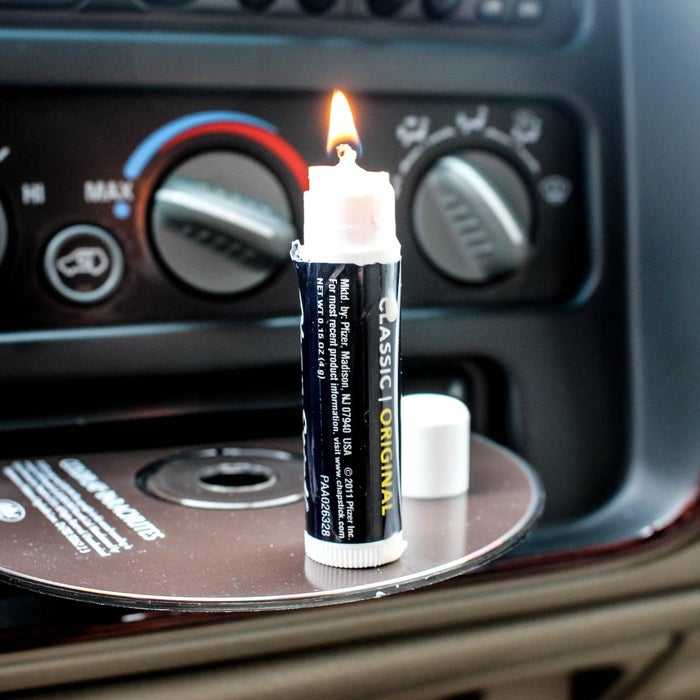
Plastic Bottle Solar Still
Staying hydrated should be among your top priorities after a disaster. (The average person can only survive two or three days without water.) Use an empty plastic bottle to filter water from plants, soil, or even mud, removing salts and heavy metals. Cut off the bottom of the bottle, then fold the bottle wall up a few inches into the interior. Next, place the mini still into a muddy puddle or pan of salt water and wait for the sun to do its work. Evaporated water will collect on the inside of the bottle, run down the sides and collect within the folded lip. When you’ve collected enough liquid, remove the lid and pour the distilled water into a clean container, or drink straight from the still.
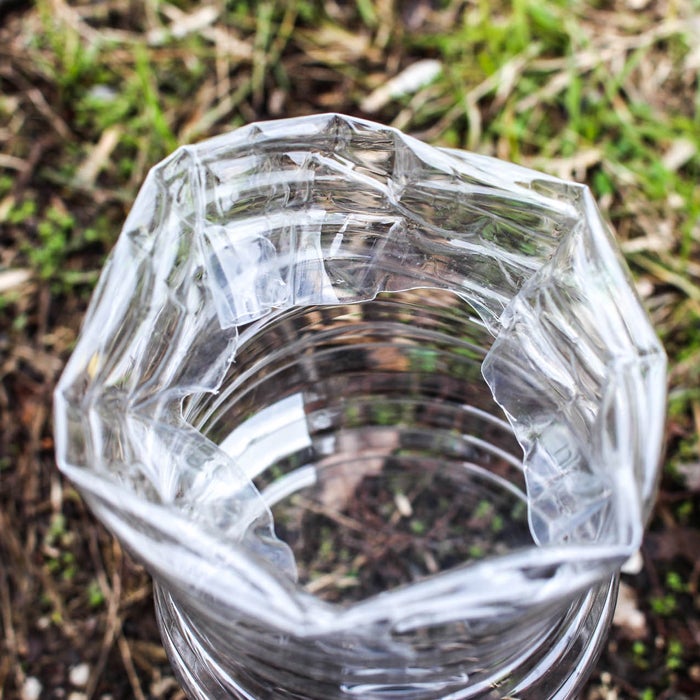
Pop Can Fishing Rod
When resources run low, use a tin pop can to make what is colloquially known as a “hand-reel hobo kit”—essentially an improvised fishing pole. Use a knife or pliers to pry off the tab on the top, and break apart one of the small rings into a barbed fishing hook. Tie it to a piece of dental floss or any other string-like material, and wind the rest around the can. Use the makeshift rod to catch perch or other small fish. You can even store worms for bait inside the empty can.
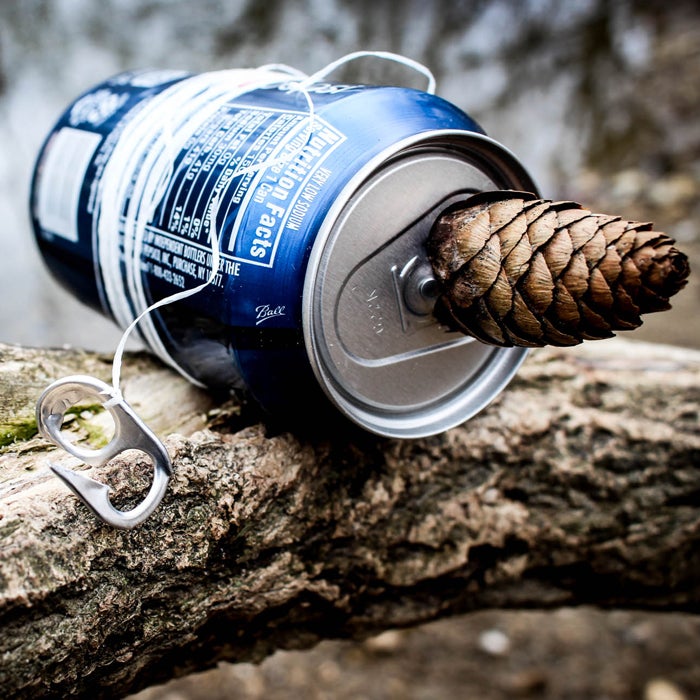
Junk Food Signal Fire
When lost in the wilderness, food is a valuable commodity. However, under the right circumstances, a bag of oily chips might be better used as kindling for a signal fire than as a snack. “A single bag can help get the flames roaring,” Stewart says, “and as the smoke rises, use the shiny mylar interior of the bag to reflect sun as a beacon to rescue planes.”
